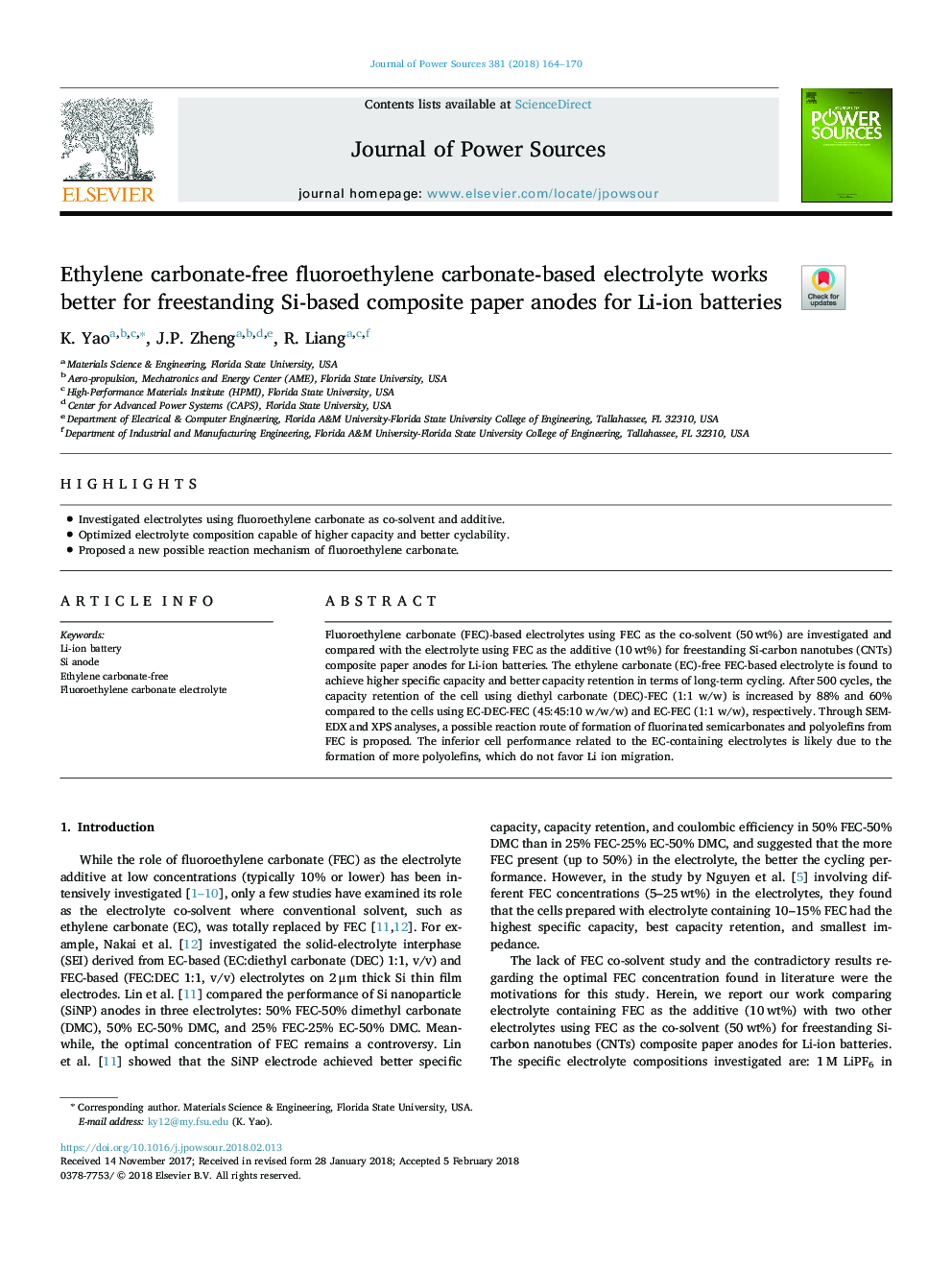| Article ID | Journal | Published Year | Pages | File Type |
|---|---|---|---|---|
| 7725552 | Journal of Power Sources | 2018 | 7 Pages |
Abstract
Fluoroethylene carbonate (FEC)-based electrolytes using FEC as the co-solvent (50â¯wt%) are investigated and compared with the electrolyte using FEC as the additive (10â¯wt%) for freestanding Si-carbon nanotubes (CNTs) composite paper anodes for Li-ion batteries. The ethylene carbonate (EC)-free FEC-based electrolyte is found to achieve higher specific capacity and better capacity retention in terms of long-term cycling. After 500 cycles, the capacity retention of the cell using diethyl carbonate (DEC)-FEC (1:1 w/w) is increased by 88% and 60% compared to the cells using EC-DEC-FEC (45:45:10 w/w/w) and EC-FEC (1:1 w/w), respectively. Through SEM-EDX and XPS analyses, a possible reaction route of formation of fluorinated semicarbonates and polyolefins from FEC is proposed. The inferior cell performance related to the EC-containing electrolytes is likely due to the formation of more polyolefins, which do not favor Li ion migration.
Keywords
Related Topics
Physical Sciences and Engineering
Chemistry
Electrochemistry
Authors
K. Yao, J.P. Zheng, R. Liang,
